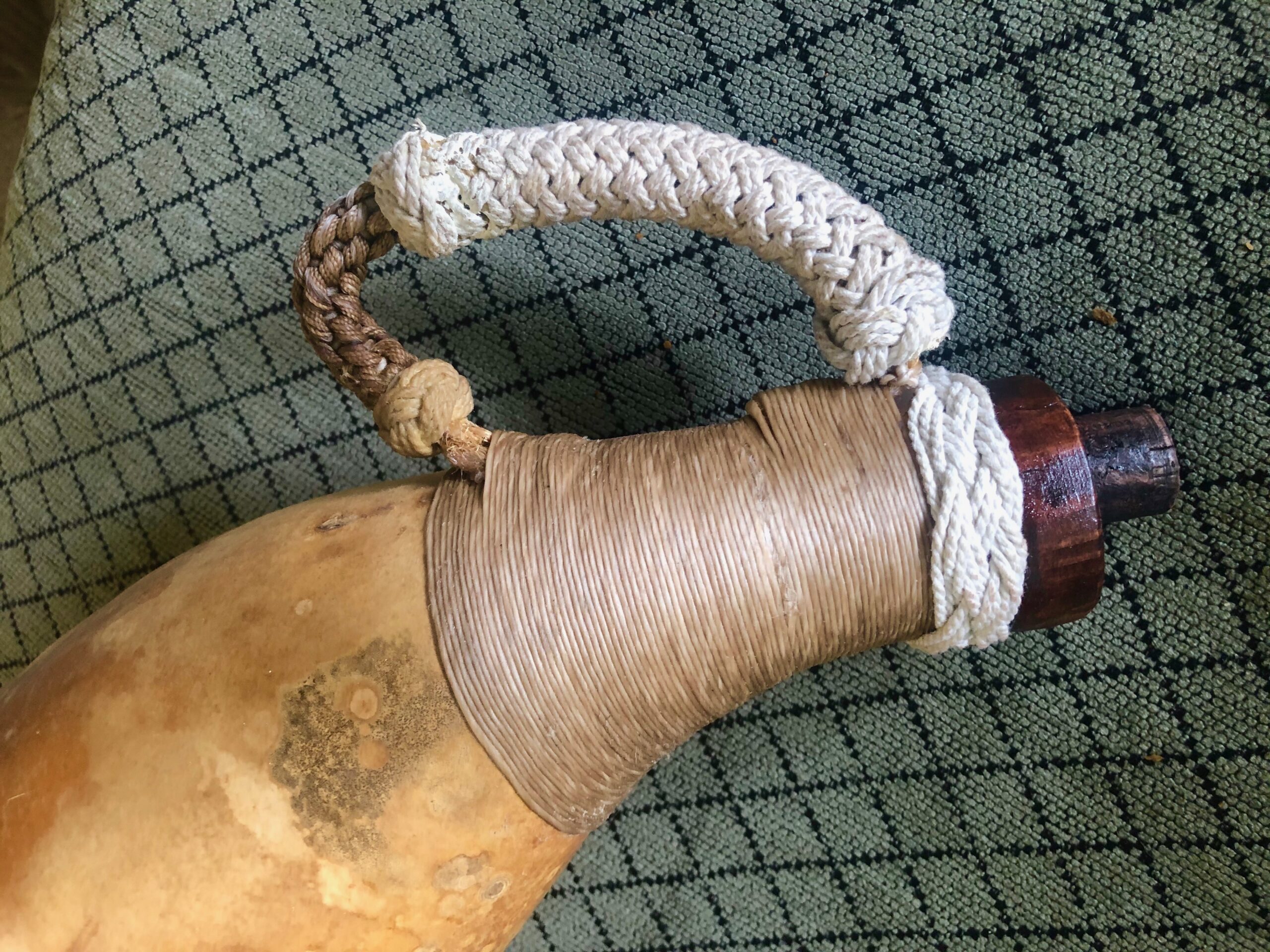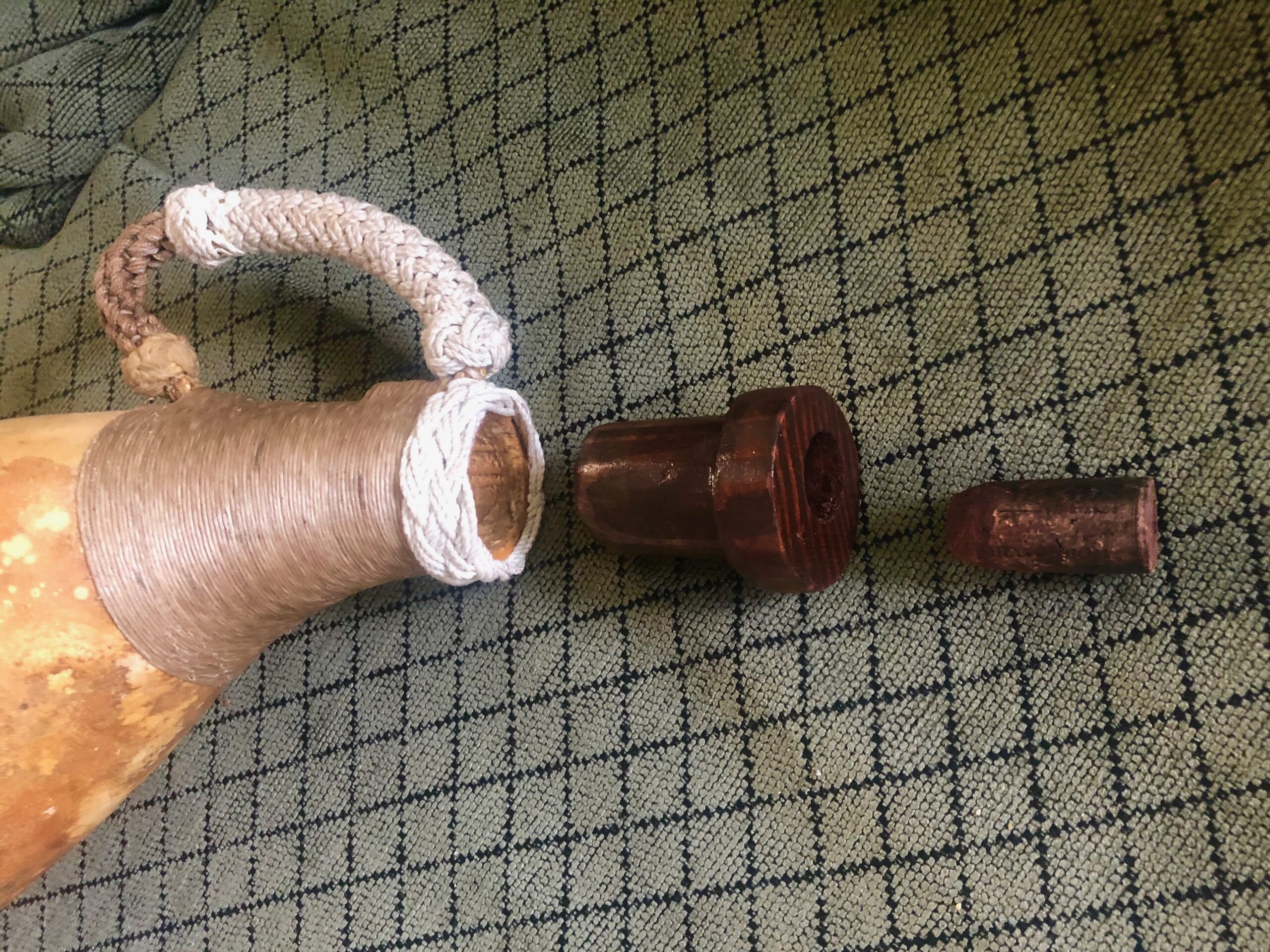
Throughout human history, the problem of how to carry and store water has been a crucial issue. Before the advent of containers of metal or plastic, the choices were limited and expensive: carved stone, masonry or clay pottery, animal skins, or if you could find them…the bottle gourd.
I made this gourd canteen in 2020 as a practical investigation into ways dried gourds can be coated with wax, sealed with a wooden and cork plug, and securely carried with cord lashing.
The bottle gourd, also called a calabash in much of Asia and Africa, is a vine grown for its fruit. While consumed as food in some cultures, its use when dried as a light, transportable water container has been documented from archeological digs dating back thousands of years.
In Hawaii and Polynesia it was used in storing both water and food aboard the voyaging canoes that allowed exploration and migration to to islands of Micronesia and Polynesia. In Polynesia, the term “calabash” usually refers to a larger, carved bowl, around which a family ate, thus the term calabash family or calabash cousins, indicating an extended family who’ve grown up around shared meals and close friendships. In addition to its use as a container, in Hawaii the gourd has long been dried and used as a percussion instrument called an ipu heke in ancient and contemporary hula.
The gourd was one of the world’s first cultivated plants grown not primarily for food, but for use as containers. The bottle gourd may have been carried from Asia to Africa, Europe, and the Americas in the course of human migration,[5] or by seeds floating across the oceans inside the gourd. It has been proven to have existed in the New World prior to the arrival of Columbus.[6]
In Hawaii the word “calabash” refers to a large serving bowl, usually made from hardwood rather than from the calabash gourd, which is used in the middle of the dining table which has led to expressions like “calabash family” or “calabash cousins.”

I made this bottle gourd canteen in 2020. Sealed with beeswax, it has a carved wooden plug which itself seats a cork stopper without damaging the mouth of the gourd. A 3/8″ hemp rope handle was first covered in waxed cord coach-whipping and then a large Turkshead knot. The handle is first glued and the attachments reinforced with waxed frapping hitches. Three smaller Turkshead knots cover the rough ends and a 8 bight/6 lead Turkshead reinforces the gourd’s mouth.
